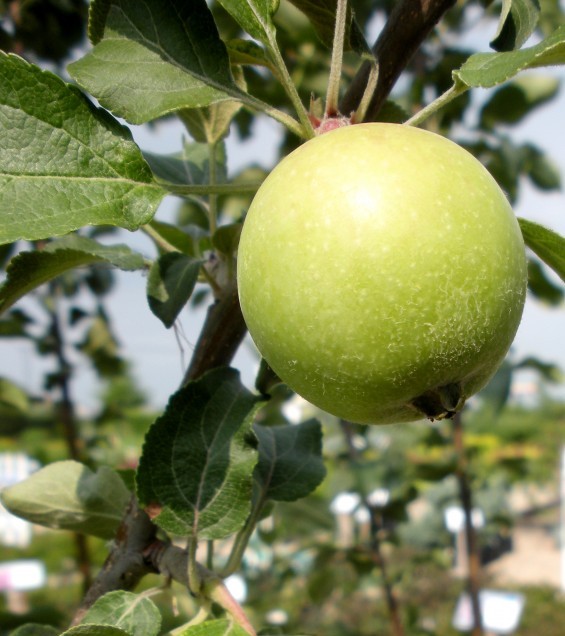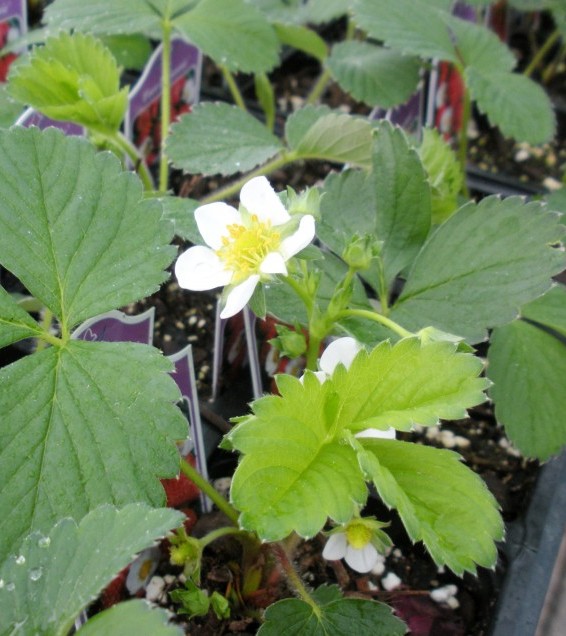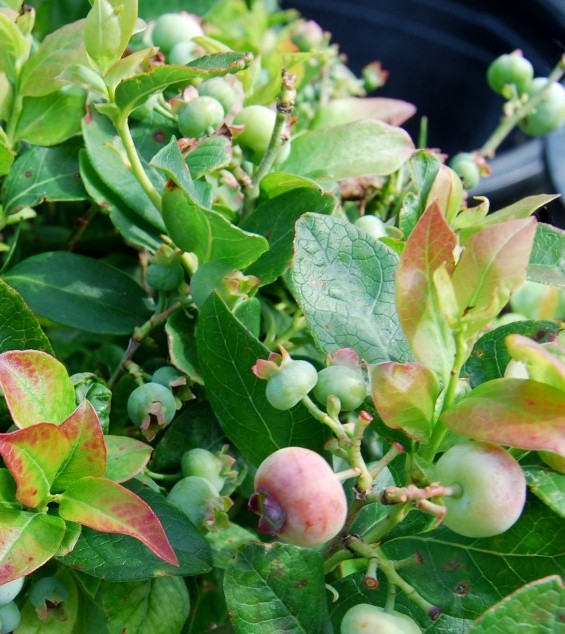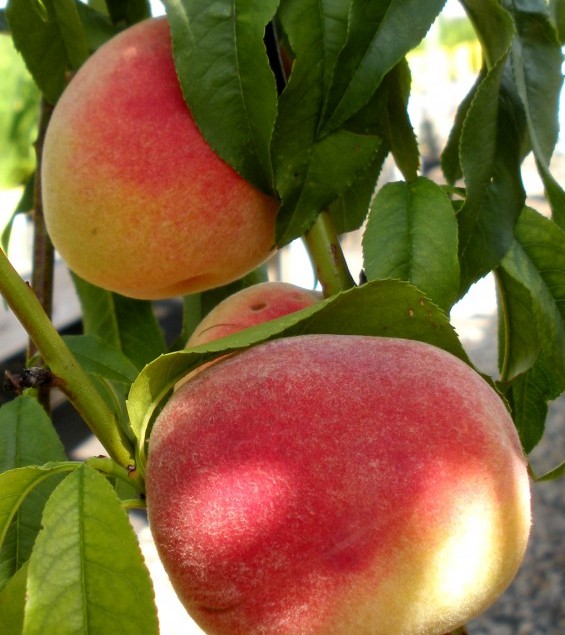






Fruit Tree and Small Fruit Care Guide for Beginner Gardeners
Delving into the world of fruit tree care and small fruit growing resources can be both exciting and rewarding for beginner gardeners. With a desire to cultivate a thriving garden, understanding the nuances of nurturing fruit trees forms the foundation of a successful planting journey. From selecting the right tree for your gardening space to tending to the growth, feeding, and protection of your fruit-bearing plants, this ultimate guide aims to equip novice gardeners with the essential knowledge and resources needed to embark on a fruitful gardening adventure. Explore the intricacies of fruiting plant care and discover the bountiful joys that come with cultivating delicious and fresh fruits in your garden in this Fruit Tree and Small Fruit Care Guide for Beginner Gardeners.
Understanding Fruit Tree Basics
Getting to Know Your Fruit Trees
Before diving into fruit tree care, it’s important to recognize that not all fruit trees are the same. Each type of fruit tree has its own specific needs and growth habits. Additionally, fruit trees can be categorized by the climate they thrive in—some require cold winters to produce fruit, whereas others prefer milder conditions.
Starting with the basics, learn about the different rootstocks, which determine the tree’s size and how quickly it will bear fruit. Understand the terms “self-pollinating” and “cross-pollinating” as they will inform your choices if you plan to grow more than one tree. Knowledge of these fundamentals will guide you in choosing the right trees for your garden and set you on a path to successful fruit production.
Essential Factors to Consider
When selecting fruit trees for your garden, consider several key factors to ensure the health and productivity of your plants. First, think about the hardiness zone of your area. This is a measure of the coldest temperatures that plants can withstand, and it’s crucial for choosing varieties that will survive your local climate. Southern MN zone where Mankato is, is now zone 5a.
Next, evaluate the space available in your garden. Different fruit trees have varying space requirements, both above and below ground. Be aware of the mature size of the trees to avoid overcrowding and competition for resources. Sunlight is another important factor; most fruit trees need full sun to produce the best fruits.
Lastly, consider your time commitment. Some trees require more maintenance than others. If you have limited time, choose fruit trees that are known for being low-maintenance. By taking these factors into account, you’ll be more likely to enjoy a bountiful harvest.
Detailed Guide on Fruit Tree Care
Picking the Right Location
Choosing the right location is a critical first step in fruit tree care. The ideal spot provides sufficient sunlight, as most fruit trees need at least 6 to 8 hours of direct sun per day to thrive and produce fruit. Look for a location that is sheltered from strong winds, which can damage trees and reduce pollination rates.
Also, consider the microclimate of your chosen location. Areas that are prone to frost pockets can be harmful during the blooming period and can significantly impact fruit set. Elevation on slopes or hills can help air circulate and reduce frost risk.
Drainage is another vital aspect. Fruit trees do not grow well in waterlogged soil. If necessary, plant your trees on a slight mound to improve drainage and prevent root rot. Proper location selection will not only support the health of your fruit trees but also maximize their fruit production potential.
Suitable Soil for Fruit Trees
Soil quality is paramount for healthy fruit trees. The best soil for most fruit trees is well-draining yet retains enough moisture to keep roots consistently moist. Before planting, test the soil for pH levels—fruit trees generally prefer slightly acidic to neutral soil (pH 6.0 to 7.0).
Organic matter is a key ingredient in a fruitful soil mix. Compost or well-rotted manure enriches the soil, providing nutrients and improving texture and water retention. Additionally, a layer of mulch will help maintain soil moisture and temperature, as well as suppress weeds that compete for nutrients.
By ensuring that your soil is suitable, you lay the groundwork for your fruit trees to prosper.
Watering Practices for Fruit Trees
Watering is a key element in maintaining healthy fruit trees. Newly planted trees require frequent watering to establish their root systems. During the first growing season, it’s crucial to keep the soil around the roots moist, but not soaked. As a general rule, give your fruit trees 1 to 2 inches of water per week, adjusting for rainfall, temperature, and soil conditions.
For mature trees, deep, infrequent watering is better than frequent, shallow watering. This encourages deeper root growth and greater drought tolerance. The best time to water is early in the morning or late in the afternoon to minimize evaporation.
Consider using drip irrigation or soaker hoses to deliver water directly to the root zone. This method reduces water waste and keeps foliage dry, which can help prevent fungal diseases. Monitoring soil moisture with a probe or a simple finger test can help you determine when it’s time to water. Remember, consistent watering practices contribute to the overall health and productivity of your fruit trees.
Important Steps in Pruning
Pruning is essential for the health and productivity of fruit trees. It helps to shape the tree, promote healthy growth, remove dead or diseased wood, and increase fruit quality. The best time to prune is during the dormant season, late winter or early spring, before new growth begins.
Start by removing any branches that are dead, damaged, or diseased. Then, thin out areas where branches are overcrowded to allow sunlight and air to penetrate the canopy. This reduces the risk of disease and encourages more fruit production. Keep the tree’s center open by trimming back branches that cross or grow inward.
When cutting, make clean cuts close to the branch collar for proper healing. Avoid leaving stubs, as these can attract pests and disease. Finally, limit pruning to no more than 25% of the tree’s total branches in a single season to avoid stress. With regular and thoughtful pruning, your fruit trees can reach their full potential.
Small Fruit Growing Resources
Exploring Various Types of Small Fruits
Small fruits, which include berries and other diminutive fruit varieties, are an excellent addition to any garden due to their lower space requirements and shorter time to produce fruit compared to larger fruit trees. When exploring small fruits, consider starting with strawberries, raspberries, honeyberries, or blackberries, as they are some of the easiest for beginners to grow.
Each type of small fruit comes with its own set of care instructions. For instance, strawberries prefer well-drained soil and full sun, while blueberries require acidic soil to thrive. Raspberries and blackberries, on the other hand, will need support structures as they grow.
Understanding the growing conditions and care required for each type of small fruit is key to a successful harvest. With the right preparation and maintenance, small fruits can yield a delicious and sizable crop even in a limited space.
Tips on Growing Small Fruits Successfully
To grow small fruits successfully, start by selecting varieties that are well-suited to your climate and resistant to local pests and diseases. Planting disease-resistant varieties can save a lot of trouble down the line.
Soil preparation is another crucial step. Small fruits often have specific soil requirements, like the high acidity needed for blueberries. Amend your soil accordingly and ensure good drainage to prevent root diseases.
Regular pruning is important for small fruits, such as raspberries and blackberries, to maintain plant health and maximize fruit production. Prune old canes that have already fruited to make way for new growth.
Mulching is beneficial for maintaining soil moisture, regulating temperature, and suppressing weeds. Use organic mulch, such as straw or wood chips, around the base of the plants.
Lastly, be vigilant about watering, especially during dry spells. Berries in particular need a consistent supply of moisture for fruit development. By following these tips, you can enjoy a vibrant and fruitful small fruit garden.
Addressing Common Issues
Dealing with Pest Problems
Pests can be a major challenge when growing fruit trees. The key to managing pest problems is to take a proactive and integrated approach. Regularly inspect your trees for signs of pests and take action early to prevent infestations from becoming severe.
Cultural practices such as proper pruning, sanitation, and the selection of resistant varieties can greatly reduce pest issues. Remove any fallen fruits and prune out any dead or diseased branches to eliminate potential breeding grounds for pests.
For biological control, introduce beneficial insects like ladybugs and lacewings, which prey on common pests such as aphids and mites. If pest problems persist, consider using pheromone traps or organic pesticides, ensuring they are suitable for use on fruit trees and applied according to the label instructions.
Finally, maintaining a diverse garden can help deter pests by attracting natural predators and providing a less attractive environment for pests to thrive. By staying vigilant and employing these strategies, you can keep pest problems in check and protect your fruit trees.
Managing Disease in Fruit Trees
Disease management is a critical component of fruit tree care. To prevent diseases, start by choosing disease-resistant fruit tree varieties when possible. Good cultural practices, including proper site selection, adequate spacing, and well-drained soil, can minimize disease risk. The use of fungicides and insecticides may be needed and must be used properly for effectiveness and reducing harm to any pollinators.
Keep a close eye on your trees for any signs of disease, such as discolored leaves, cankers, or unusual growths. Early detection is crucial for effective management. Pruning to enhance air circulation can help reduce fungal diseases, as many thrive in moist, stagnant air.
If you do encounter a disease, correctly identifying it is the first step towards effective treatment. Some diseases can be managed with cultural changes or organic treatments, such as copper-based fungicides, which can be applied as a preventive measure during dormant periods.
Always ensure garden tools are clean and sterilized to prevent the spread of pathogens. By consistently monitoring and caring for your fruit trees, you can effectively manage diseases and maintain the health of your garden.
Nourishing Undernourished Fruit Trees
When fruit trees appear undernourished, it is essential to assess their nutritional needs and rectify any deficiencies. A lack of key nutrients can lead to poor growth, reduced fruiting, and increased susceptibility to diseases and pests.
Begin by conducting a soil test to determine the specific nutrients lacking in your soil. This will guide you in selecting the right type and amount of fertilizer. A balanced, slow-release fertilizer applied in early spring can provide a steady supply of nutrients throughout the growing season.
Mulching with organic materials such as compost or well-rotted manure can also improve soil fertility over time while maintaining moisture levels and soil structure. Be cautious not to over-fertilize, as excess nutrients can be as detrimental as deficiencies, leading to lush foliage at the expense of fruit production.
Proper watering is equally crucial for nutrient uptake. Ensure that your trees receive consistent water, especially during dry periods, to help dissolve nutrients and facilitate their absorption by the roots. By providing the right nourishment, you can help your undernourished fruit trees regain vigor and yield abundant fruits.
Protecting your Fruits From Animals
- Fencing or Tree Guards: Erecting a physical barrier around your fruit trees and plants can be highly effective in keeping animals out. Use sturdy fencing material such as chicken wire or hardware cloth, and make sure it extends below ground level to prevent burrowing animals from getting in. The height of the fence should be tall enough to deter larger animals like deer.
Mesh tree guards are the easiest way to prevent small rodents and deer from damaging the tree bark on young and older fruit trees. These will not prevent the eating of branches. - Netting: Covering your plants with netting can prevent birds and small mammals from reaching the fruit. Use lightweight, bird-friendly netting that won’t entangle birds or other animals. Make sure the netting is securely fastened to prevent animals from accessing the fruit from underneath.
- Repellents: Various commercial repellents are available that can deter animals from eating your fruit. These can be sprayed directly on the plants or applied to the surrounding area. Repellents often contain natural or chemical substances that emit odors or tastes that animals find unpleasant.
Recommended Products and Services
Tools for Maintaining Fruit Trees
The right tools can make maintaining fruit trees easier and more effective. Essential tools include a sturdy pair of pruning shears for trimming small branches and secateurs for the larger ones. A quality pruning saw is necessary for removing bigger limbs, while loppers can be used for branches that are too thick for shears but too thin for a saw.
For taller trees, a pole pruner or an extendable tree saw can help you reach higher branches without the need for a ladder. When working with tall trees, safety should always be a priority, so consider investing in a stable orchard ladder designed for uneven ground and tree work.
Regular maintenance also involves protecting trees from pests and diseases, for which you might need sprayers or dusters to apply organic pesticides and fungicides. And don’t forget about a good pair of gloves to protect your hands during these tasks. Investing in these tools will aid in keeping your fruit trees healthy and productive.
Expert Services for Fruit Tree Care
For those who prefer professional assistance or have complex fruit tree care needs, expert services can be invaluable. Arborists and horticulturalists specialize in tree health and can provide services such as advanced pruning, disease diagnosis, and treatment plans.
Consulting with a local extension service can also offer insights into region-specific advice on fruit tree care. These experts can guide you on the best practices for your area’s climate and soil conditions.
For those battling persistent pest problems or complicated diseases, pest control companies can offer eco-friendly solutions targeted to protect fruit trees without harming the environment. Leveraging expert services can help ensure the longevity and productivity of your fruit trees, providing peace of mind and freeing up time for other gardening pursuits.
Dependable Online Resources
In addition to physical tools and expert services, there are numerous online resources available for fruit tree care. Dependable online resources include university extension websites, which often provide free, research-based information on a variety of horticultural topics, including species-specific guidance, pest management, and soil care.
Gardening forums and social media groups can be a goldmine for advice and support from fellow gardeners. They provide a platform to share experiences, ask questions, and receive feedback from a community of enthusiasts.
For a more interactive experience, consider online courses or webinars offered by gardening experts and educational institutions. These can offer in-depth knowledge on fruit tree care and provide the latest best practices.
Fruiting Plants We Carry (subject to change)
- apple
- blackberry
- blueberry
- cherry
- crabapple
- currant
- grape
- honeyberry
- mulberry
- peach
- pear
- plum
- raspberry
- strawberry – plants and bare-root
